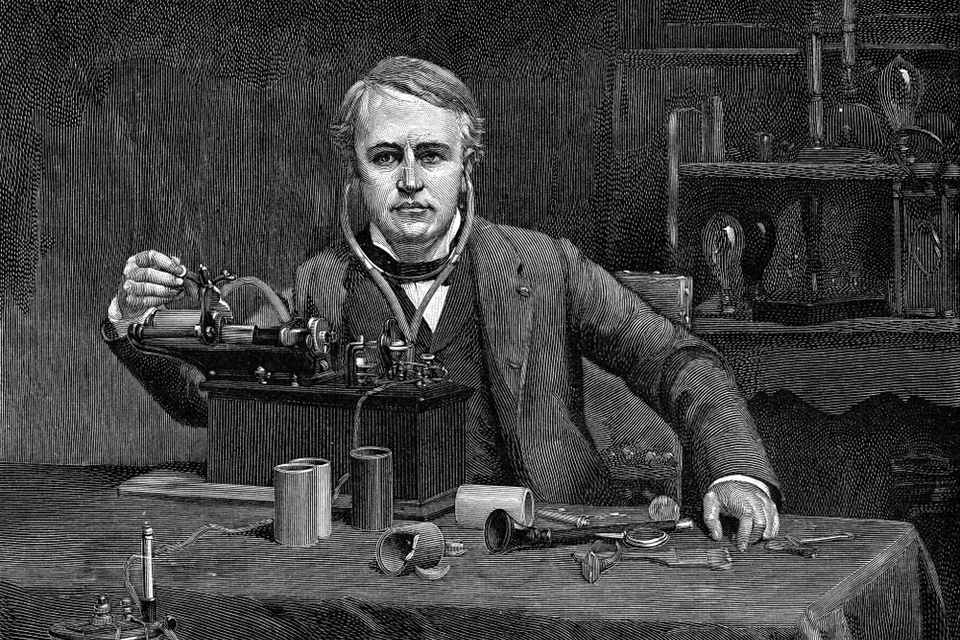In 1983, Ronald Reagan proclaimed February 11th as National Inventors’ Day in memory of Thomas Edison’s birthday.
#EdgyLabs celebrates #NationalInventorsDay with #Edison 's 3 best creations.Click To TweetThe Inventor With a Thousand Patents
Born in Milan, Ohio, Thomas Alva Edison remains one of the greatest inventors the world has ever seen. Edison is an industrial legend whose innovations were not the result of chance but a well-rooted method, organization, and an unfailing determination. At 22, he sold his first patent for $40,000 USD to perfect a machine to transmit stock market data. This was the beginning of his amazing journey.
Of the thousand patents and inventions Edison left (at his death there were 1,093 U.S. patents in his name) Edgy Labs picked three of his inventions that have changed the course of history:
1. The Incandescent Lamp: The First Light Bulb
The flagship invention of Thomas Edison is the light bulb. This incandescent bulb lifted the United States into full-blown industrialization and revolutionized human societies. After countless trials, the abnormally determined inventor succeeded in producing sustainable light.
Edison’s light bulb marked the end of the malodorous and dangerous gas lighting, which, in turn, had replaced a century earlier wax candles, which were in use since in the Middle Ages.
Edison was not the first to attempt creating the light bulb. Many other inventors attempted the feat, but he succeeded where they had failed.
2. The Phonograph: The First Sound-Recording and Emitting Device
In 1877, two years before he gifted the incandescent lamp to the world, Edison invented the phonograph (or gramophone), which he tenderly called his “baby.”
This device, with a rotating cylinder which recorded the human voice, brought Edison public attention and kicked off his celebrity. Linked to the telephone, the invention of the phonograph introduced an entirely new element in human tradition: reproducing the spoken word.
3. The Kinetoscope: Cinema is Born
Edison built the kinetoscope (from the Greek kinetos, inmotion, and skopein, to examine) in 1891, partly thanks to his meeting with the photographer Eadweard Muybridge and his work.
With the kinetoscope, which would do “for the eye what the phonograph does for the ear,” Edison was soon to make his first film.
When the legendary inventor died on October 18th, 1931, then President Hoover requested that Americans turn off their lights for one minute in recognition.




Comments (0)
Most Recent